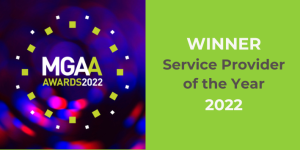- April 29, 2021

Insurance & ESG: Where does D&I fit in Reporting?
In the last few years, the insurance industry has seen a profound shift in its approach to diversity and inclusion. Launched in 2015, the annual industry celebration of inclusion, Dive In festival, has grown from a local Lloyd’s Market-centred event with 1,700 attendees, to a global experience with over 30,000 people attending 144 events across 32 countries in 2020. Insurance is becoming more diverse, with female representation at board level now around 29%, versus 25% in 2019. However, there is evidently a long way to go, with just 10% of entry-level positions held by Black, Asian and minority ethnic employees, falling to 2% at executive level[1].
Meaningful progress requires a cultural evolution, sustained over long periods, rather than short sprints. The challenge for those trying to steer the change is how to identify whether it is happening, and identify opportunities to correct or accelerate the course.
How are insurers currently reporting D&I?
There are some obvious examples of diversity and inclusion reporting, such as the gender pay gap, which has been compulsory since 2017 for organisations with a headcount of more than 250. Some organisations have taken this a step further, reporting on ethnicity, LGBTQ+ and disability. However, these are not compulsory, and organisations opting to report these pay gaps are very much the exception.
Some businesses have also opted to internally or publicly share their employee declaration rates for gender, ethnicity, LGBTQ+ and disability. Whilst this does not fix the issue that many of these figures will be too low, it does support a culture of transparency and improve accountability.
The accuracy of both pay and declaration statistics, however, is impacted heavily by the willingness of employees to share this information. Whilst gender, seniority and age information is usually readily available as part of an employee personnel file, other information such ethnicity must be volunteered. Often this means that this vital information is missing, preventing organisations from gaining an accurate picture of their workforce. There can be many reasons for this, ranging from a lack of awareness through to a fear of repercussions.
Looking beyond workforce reporting, a number of organisations elect to participate in external benchmarking, indexing or accreditation. For example, the Corporate Sustainability Assessment for the prestigious Dow Jones Sustainability Index includes questions on workforce and board diversity[2]. In this instance, diversity forms a contributing element of an overall review of economic, environmental and social performance. At the other end of the spectrum organisations can participate in highly specialised initiatives, such as the Stonewall Workplace Equality Index (focused on LGBTQ+), or Disability Confident accreditation (a DWP scheme with three tiers).
The benefit of these types of review are that they are undertaken by independent bodies and provide a clear signal to internal and external audiences about a business’s position against other organisations. However, as this type of assessment becomes more common, so too does the variety available. With limited resources available to support these comprehensive reviews, companies will need to select those which offer greatest value. This dilutes some of the benefit, as often there will be a very small pool of industry peers against which performance can be accurately assessed.
Why is reporting important?
Diversity reporting, whilst not perfect, does help to provide important insights which, if used effectively, can help to improve inclusion in an organisation. Internally, information on diversity, alongside datapoints such as ENPS, OHI and performance metrics, can help to understand employee satisfaction and wellbeing. This information can have commercial implications, too. It is well known that diverse organisations outperform less diverse peers[3]. Diversity amongst employees encourages diversity of thought, helping to drive innovation. Customers and prospective employees are also more likely to engage with a company they feel represents them.
As information on key issues such as diversity and sustainability becomes more readily available, companies are likely to see the financial impact of an increase in shareholder activism and conscientious consumption. Organisations who perform well may reap the benefits. Those who are underperforming may elect to shy away from sharing this information, however if communicated alongside a clear and realistic improvement strategy, transparency may have a favourable outcome. A lack of publicly available information may be perceived as an attempt to mask a known issue, regardless of the actual intent.
Pressure to report and act on diversity data is also likely to come from within the industry. For example, the FCA recently released its final guidance on vulnerable customers, which stated that firms will be held to account for their treatment of vulnerable customers. In order to evidence this, firms will need to be able to identify these customers, encouraging regular reporting and scrutiny of the subsequent data. Similarly, the recently published report from the Commission on Race and Ethnic Disparities found that the increasing use of AI, if not carefully monitored, may create or compound racial bias in decision-making. Clearly, it makes commercial sense to ensure diversity is a facet of the data collected, processed and analysed in such projects.
Is reporting enough?
Aside from known issues with declaration rates, the main challenge with diversity reporting is that it cannot tell us about the culture of an organisation, or the lived experience of employees. Complementary data sets such as OHI can help to supplement our knowledge, but this is not sufficient to say we understand the culture of a business at every level. For example, we know from reporting that only 10% of entry level positions are held by Black, Asian and minority ethnic employees, but do we know the reason for this? Is it because there are fewer applicants, or because those who apply are less likely to be hired? If there are fewer applicants, do we know why? Individual voices are often lost when data is explored at an aggregate level, which can mean that in pursuit of a reportable statistic, the real insight is neglected.
Additionally, diversity reporting can often overlook issues of intersectionality. Typically, sample sizes become very small when you start to look at a subset of a subset (for example, Black LGBTQ+ employees), so often this data is underused. However, this can mean that the experiences of those individuals are entirely overlooked, again limiting the quality of organisational activities and thus the attractiveness of a business to a diverse audience.
There is also a challenge that reporting alone doesn’t drive change. Undoubtedly, reporting improves visibility, which in turn should encourage action, however often this action can involve a lot of discussion and debate and can yield small or slow results. This perceived lack of action, combined with bold campaigns or communication plans such as sponsorship of inclusion events, imagery redesigns, or social media releases, can lead to accusations such as tokenism or pink-washing. This is where an organisation is seen as using a cause to boost their profile and portray themselves as inclusive, without making any meaningful effort to become inclusive.
Should D&I be part of ESG?
Clearly, there are pitfalls to be wary of, however diversity and inclusion reporting is vital to building a sustainable future. The adage ‘what gets measured gets done’ is significant here. The measurement alone is not sufficient, however as an agent of change, little beats an eye-opening statistic.
The question, therefore, is not should we report, but rather how should we report? By restricting diversity reporting to the bare essentials such as the gender pay gap, valuable insights are lost. ESG indexes provide an excellent means of externally validating performance, however diversity is usually one small facet of these evaluations, which reduces the focus on the topic, limits the benefits to the organisation, and overlooks complex issues such as intersectionality. Separate, specialist and comprehensive reporting on diversity and culture, supported with clear action plans for improvements will no doubt yield a greater focus and results, however few (if any) organisations have the resources, willingness, or stakeholder support to implement this as a routine activity.
Plainly, there is no one size fits all solution, but in the six years since the inaugural Dive In festival, the expectations of employees, customers, regulators and shareholders have evolved. A bare necessities approach is no longer acceptable.
[1] https://www.theactuary.com/2021/03/01/insurers-boost-female-representation-boards
[2] https://portal.csa.spglobal.com/survey/documents/SAM_CSA_Companion.pdf
[3] https://www.mckinsey.com/business-functions/organization/our-insights/why-diversity-matters
About the Author – Sally Blake
In her role as Zurich’s Claims Customer Performance and Insights Manager, Sally provides data driven insights to improve the customer claims experience. Having instigated and led the IIL’s InsurTech Research Study, Sally recently completed an Executive MBA, where she received a Women in Business Award. Her major achievement explored the relationship between benefit and trust in digital insurance products, building on her Morgan Owen award winning research, for which she was the first female prize recipient.
As the recently retired Chair of Zurich’s Accessibility and Inclusion Network, Sally is an ambassador for disability and an advocate for inclusive business strategies.





